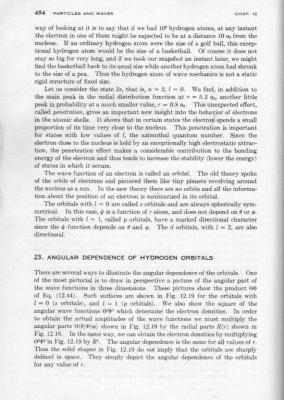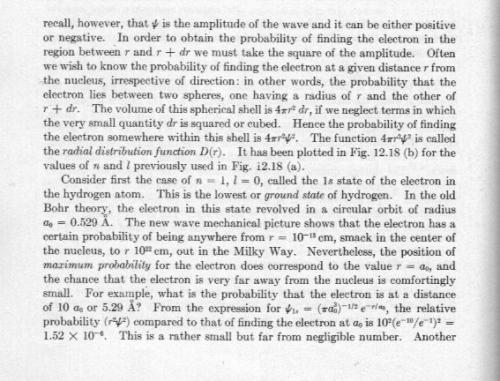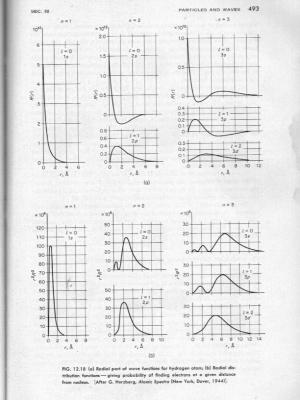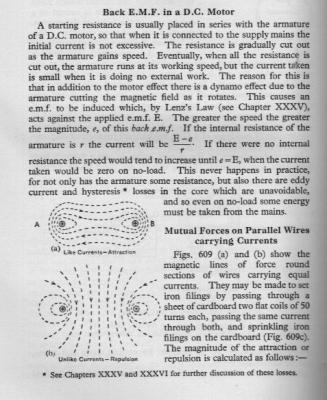-
Posts
17639 -
Joined
-
Last visited
-
Days Won
93
Content Type
Profiles
Forums
Events
Everything posted by studiot
-

no such thing as "infinity" in the real world (split)
studiot replied to cladking's topic in Speculations
I think this discussion has really brought out the limitations of the rigid A or NotA brand of logic. So many of the terms support multiple interpretations and/or suble nuances of meaning. Worse the moment we introduce explanations we introduce more terms to have shades of. The meaning of measureable or observable for instance, I think my examples have shown that even the concept of existence has such range of meaning and cannot be simply described as exists or not exists. Another muse arising from another thread where we were discussing the meaning of singularities. We are all happy with the function y = x2 rising ever more as we increase x and noting that we can never 'get to the other side of that infinity' I don't think anyone would call that a singularity, because we can see that we can never reach it. But consider the function y = 1/mod(x). This has a singularity at x=0 (note I do not say at the origin as is often said and is strictly incorrect) But we can bracket or get to both sides of this curve so we regard this infinity as a disturbance of some sort in our otherwise controlled number line and call it a singularity. -

Lattice Structures, how to identify number of Spheres in Unit Cell
studiot replied to whitesniper001's topic in Homework Help
Wow what resources are available today. This stuff is mind bending on first reading. You are correct with your first example and you seem to have picked up the rules for numbers of atoms per cell. 1) An atom lying totally within a unit cell belongs to that cell only and contributes one. 2) An atom lying on the face of the cell belongs to two cells equally and counts as one half. 3) An atom lying on an edge is common to four unit cells and therefore contributes one quarter. 4) An atom at a corner is common to eight unit cells and therefore counts one eighth. Your second example is of the Nickel Arsenide (NiAs) structure with repeating ABABAB etc units. The unit cell is discussed in this powerpoint, page 8,9 http://homepages.abdn.ac.uk/j.skakle/pages/y3-2002/3lec6.ppt and again in this pdf from page 46. http://www.chem.uci.edu/~lawm/253%202.pdf You can also play with these interactive sites. http://www.chemtube3d.com/solidstate/_sync(NiAs).htm http://www.chemtube3d.com/solidstate/_NiAs(final).htm -

no such thing as "infinity" in the real world (split)
studiot replied to cladking's topic in Speculations
cladking You're going toneed to explain this to me. I'm sure if you're right then I'm wrong. Of course. People copy non existent characters in fiction books, films and video games, as well as real ones in the news, and other non-fiction material. People searched in vain for Atlantis, the holy grail, the aether and the philosopher's stone. Thank you for the answer. As with strange's comment that these any electron in these states has finite energy, I don't see that either of you questions are relevant. The OP question (proposition) is that infinity does not exist in the real world. Not whether we can observe it, or whether the states (if they exist) are occupied, simply that they are available. In the absence of a better definition from the OP or anyone else, and I have asked in this thread, I am equating availability with existence. -
Hello, Saby and welcome. The first term in your expansion is [math]\frac{{{\mu _0}I}}{{4\pi r}}\oint\limits_{} {dl} [/math] Remember what dl is. It is the physical spatial displacement vector. (not the electric displacment vector D) When taken round a complete loop it must end up where it started. That is the total displacement must be zero. so [math]\oint\limits_{} {dl} = 0[/math] I didn't get why the last thing (the nabla opened thing) was zero... If you want to display math here go to this (free) site and type it in. It will generate either Latex or a gif for you to paste in. Edit forgot the links, sorry. http://www.sciweavers.org/free-online-latex-equation-editor or https://www.codecogs.com/latex/eqneditor.php
-

no such thing as "infinity" in the real world (split)
studiot replied to cladking's topic in Speculations
Yes I quite agree and I was just thinking of posting to invite cladking, who introduced the question, to say what he means by reality and exists. I was thinking about a test for existence and came up with the question Can something that does not exist interact with/affect reality? I thought I had it but then I realised that non existent things do indeed affect reality. -
Look up mica, graphite & clay mineral structures. The layered structure affects physical and electrical properties.and produces anisotropies in these properties. Graphite is used as a lubricant. Find out if the bonding in graphite is ionic or covalent then look up its electrical properties Mica can be cut to ultrathin sheets Clay minerals have a hugely rich structure and hold pore water in soils.
-

no such thing as "infinity" in the real world (split)
studiot replied to cladking's topic in Speculations
Yes , you said that before and it is quite true, but I don't see how that is relevent? For instance how many natural numbers are there? Yet every one of them is finite. Consider further Enumeration is now considered one of the basic physical 'dimensions', along with mass, length, time, etc. Energy is not so considered. -

no such thing as "infinity" in the real world (split)
studiot replied to cladking's topic in Speculations
Of course, but the original purpose of this model was substantially more exacting than the question we are discussing here. Surely it is enough to know that 1) An electron can be removed form a hydrogen atom 2) Whiilst bound within the atom the electron has a finite number of energy states available to it (neither the exact number, nor their exact values are relevent here) 3) Once the electron has left tthe atom, leaving a hydrogen ion behind, it is in a continuum and has surely therefore has an infinity of states availble to it. So is this not an example of physical realisation of infinity? -

no such thing as "infinity" in the real world (split)
studiot replied to cladking's topic in Speculations
Thank you ajb, I see I did not explain myself very well since you have picked up far more complicated cases than I envisaged. I was not thinking of anything so complicated as the band structures in solid state physics, just a single atom or molecule, possibly the simplest ie hydrogen. In any event band structures still have a finite number of states available. I was just thinking about the morse curve http://www.chemicool.com/definition/morse_potential.html and the ionisation energy, when the electron breaks free of a simple molecule to form an ion and a free electron, which is in a continuum of energy states. -

no such thing as "infinity" in the real world (split)
studiot replied to cladking's topic in Speculations
ajb, This really is the key point and one I seem to have to keep making (but not for your benefit). It does not matter if a theory gives us infinity for a 'value' of something we would like to meassure, which is usually the result of taking limits either in terms like 1/r or in terms of power series, this is interpreted as 'pushing the theory too far'. Singularies can appear in very simple models, like electrostatics or much more complicated theoreis in quantum field theory. They just show that the theories we have are not complete and that physics beyond these models is needed. ajb, I would really value your comment on the situation posed at the end of my post#56? ajb In truth it seems to correspond to the scientific standards of this forum and in particular the quality of the posts of the members. However, collecting lots of negative points quickly is usually a sign of poor attitude and civility. I tell you this because we know that collecting negative points is an indicator of a member quickly becoming banned for breaking the rules. I do not wish that to happen to you. Once again, +1 for displaying far greater tolerance and patience than I can. -

no such thing as "infinity" in the real world (split)
studiot replied to cladking's topic in Speculations
Yes seems a reasonable if pessimistic summing up, with the exception that many think the underlined words are obvious. What's more because reality is more that our (best) models (or to put it another way reality is our best models and then a whole lot more) it surely must include infinity since the models do so. -

Question about Radial Distribution Function graphs
studiot replied to whitesniper001's topic in Homework Help
I'm sorry I put that rather badly, I was watching a 4 beer DVD at the time. The cumulative probability for the integral over all space is obviously 1 (The electron must be somewhere). r then runs from zero to infinity and these are the limits of a cumulative integration. The formula [latex] 4\pi {\left[ {R\left( r \right)} \right]^2}{r^2}dr [/latex] can be broken down into a point probability P at r = r multiplied by an expanding volume dr. That is Pdr, whre P is [latex] 4\pi {\left[ {R\left( r \right)} \right]^2}{r^2}[/latex] This is what is plotted on your graphs. The y value at some r give the point value of P at that r. So the hump corresponds to the max P and the Bohr radius for the 1s orbital. -

Question about Radial Distribution Function graphs
studiot replied to whitesniper001's topic in Homework Help
One thing I didn't make clear is that the probability is not a point function, it is cumulative. It is not the probability at a point, but the probabilty that the electron will be found within a certain region of space. The region is defined by the limits of the integration over the volume. For spherical symmetry this is particularly easy since the limits are from r = 0 to r = r and define a ball or spherical shell anywhere within which the electron may be found. (Note the volume integral is the area of a spherical surface (4pir2) times a small radial distance dr) So as we move out from r = 0 the cumulative probability is the integral described for a sphere of radius r. The significance of the shape is that the probability starts off low and rises until you get to the hump. A bit before the hump it is significantly less so the value of r at the hump contributes the most to the cumulative probability. Your library should have a copy of Moore, it is one of the best textbooks at this level. Sleep well. -

Question about Radial Distribution Function graphs
studiot replied to whitesniper001's topic in Homework Help
-

Question about Radial Distribution Function graphs
studiot replied to whitesniper001's topic in Homework Help
You haven't indicated the level of science or maths this question is for. Because the (electrostatic) potential energy of an electron is a function only of its distance from the nucleus; that is the force field is spherically symmetrical, it is possible to express the total wave fucntion as a product of three functions, each involving only one of the three coordinates in a spherical coordinate system. Two of these coordinates are angles and the third is the radius. Thus [math]\psi = R\left( r \right)\Theta \left( \theta \right)\Phi \left( \phi \right)[/math] Where capitals represent the function and lower case represents the variables. Theta and phi are the angles, r is the radial distance from the nucleus. For all s electrons the angular part is constant for all values of of the angles. This is because the s orbitals correspond to the zero value for the subsidiary quantum number, l So all s orbitals have spherical symmetry, so only the radial part R® need be considered. The probability of finding an s electron in a small element of volume dv at a distance between r and (r+dr) from the nucleus is then [math]{\left[ {R\left( r \right)} \right]^2}dv[/math] This is the same regardless of the direction (ie the angles) of the radius vector. The total probability of finding an electron anywhere between r and (r+dr) is found by integrating the expression over a spherical shell between r and (r+dr) ie replacing dv by the total volume of the shell. This volume is [math]4\pi {r^2}dr[/math] So the integral now in terms of r becomes [math]4\pi {\left[ {R\left( r \right)} \right]^2}{r^2}dr[/math] This function is known as the radial probability distribution, which is plotted on your y axis. Are you with me so far? -

Question about Radial Distribution Function graphs
studiot replied to whitesniper001's topic in Homework Help
I assume the quote from your question was a misprint and you do indeed mean radial, not radical. That makes sense. Yes they are the correct graphs. Important features. Well maxima or minima are usually important featuresof interest in a graph. Alice the camel has 2 humps. How many humps has the 1s, 2s and 3s? Are they all the same size? What is plotted on the axis X axis? Hint hence the radial distribution Y axis ? Note the function plotted is (proportional to) the square of the wave function - What does this signify? What do you thing the r2 is doing in the y axis function? -
Yes you are probably much happier than any citizen has any right to be. I will dispatch the thought police immediately.
-
I wondered if you envisaged more turns when you first posted and I can see the machine you are describing as a combined motor and generator with alternate turns connected to the motor and the generator. This would work, but it is not in contravention of Lenz law, which I think you misunderstand. Both the motor windings and the generator windings are subject to a generated emf, known as back emf. However the back emf serves different purposes in the two sets of windings. In the motor section the back emf serves to limit (reduce) the 'applied voltage' and thus the drive current. It does indeed opposes the driving emf directly. In the generator section there is no driving emf or applied voltage. There is only mechanical driving of the shaft by the motor section. The Faraday voltage generated obeys Lenz law and provides the emf to power the external load lamp. This explanation from 'Nightingale' may help. Exactly what happens will depend upon the relative circuit values; the driving battery voltage, the circuit resistances in the motor and dynamo circuits, the lamp load resistance. However there are devices known as rotary converters which can convert (battery) DC to other values of DC or AC supply. These are less common today with modern electronic alternatives, but are still used for very high powers. Rotary converters work on essentially the same principles as we are discussing.
-
I suggest that a fruitful line of enquiry into the reported differences between gender differentiated performance in doing maths and reading (and perhaps even other activities) is to look at the questions Why do people read? Why do people do maths?
-

no such thing as "infinity" in the real world (split)
studiot replied to cladking's topic in Speculations
In defence of models, their very imperfection is their greatest strength. A perfect model matches every characteristic of that which it models in every detail, both discovered and yet to be discovered characteristics and possesses no unmatched details of its own. So the only perfect model of say an electron is an electron. Our imperfect models are much simpler and only match some (hopefully desirable) details over some limited range. But they also come sans the details that are not of interest and do not therefore need wasting effort on. As regards infinities, mathematics in this discussion has become more technical than the OP was able to support and I commend the discussion in appendix IV of Hardy's famous book (A Course of Pure Mathematics, Appendix IV, The infinite in analysis and geometry) where he discusses the Aristotelian idea of real and potential infinites in the light of 20th century mathemnatical knowledge. As regards infinities in the real world, I have a question for consideration. In quantum theory an electron has many but finite energy states available to it whilst it is part of an atom. According to quantum theory, these energy states become closer and closer together as energy increases until the energy reaches a point where the energies are contiguous and a 'continuum' of energy states arises. So the question arises what is the enumeration of the energy states within the continuum? -
That's why it's called pop-sci.
-
Not so. I did not originally offer comment on the data but summarised the survey conclusions for others to comment. The thread was later widened by others to include reading and I do not object to this. In fact I welcome it as a natural extension to other observed gender differences. This is the second time to have serouiusly misquoted my statements. I did not claim this at all. Strictly I claimed that girls appear to buy more comics than boys. Nothing at all was said about their preferences. In my turn perhaps I did misunderstand some of what you wrote. I apologise for any of this. Data should be tested not only against the original collection but also against other known or observed data or theory. If a conflict is found the proper conclusion may well be that further observation is necessary to answer the discrepancy. Data, after all can be sometimes misleading and sometimes actually false.
-
Nice work if you can get it. But if you live in the EU, particularly in the UK, you are required by law to do many things online these days. from driving licence to tax to farm movemnt orders to all the other umpteen government forms we have to deal with. Business is also trying to force this more and more.
-
That is not a justifiable conclusion. I have not disputed the data collected by the surveys. However I am fully entitled to dispute any subsequent, analysis, interpretation or explanation. It is for the surveyors to show that that any other explanation is invalid, I merely have to find one, I don't have to prove it as I am not offering it as gospel.
-
Far too prescriptive. No it is not my interpretation , I attributed it to your own goodself. No it does not follow that what people (of any age or gender including children) do is the same as what they say the would prefer to do in a survey. This was my principal point. I do not have total circulation figures for comics for boys or men comics v those for girls or women, I did however observe that there is a greater selection of girls and womens which, being subject to extreme commercial pressures, would suggest that girls and women buy more comic reading material and men and boys. That too is data. You cannot pick and choose which data you like and which data you don't, but you can try to understand the data you have and its progeny, before drawing invalid or unwarranted conclusions. How does that play with a survey of 'preferences'?





